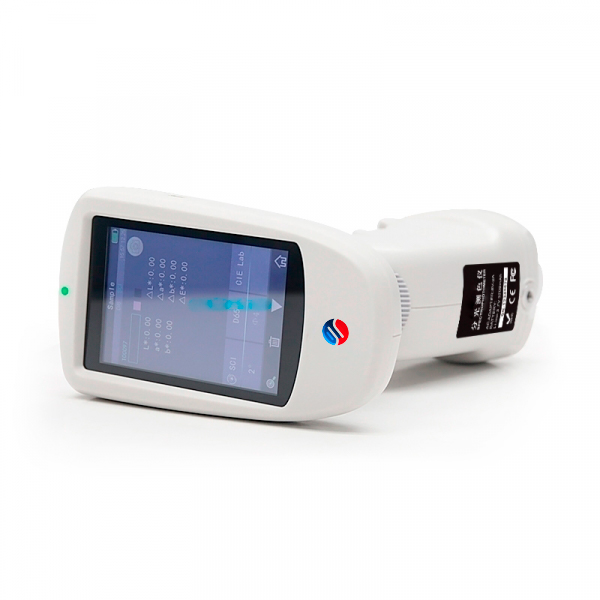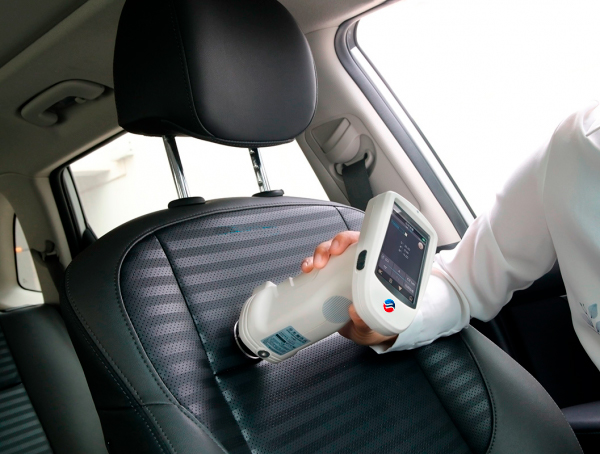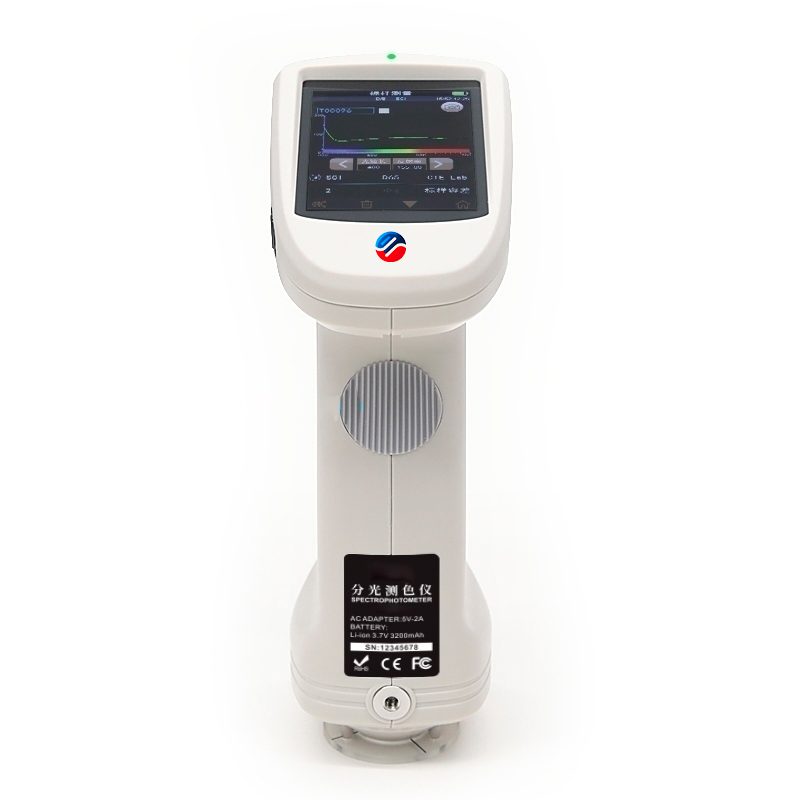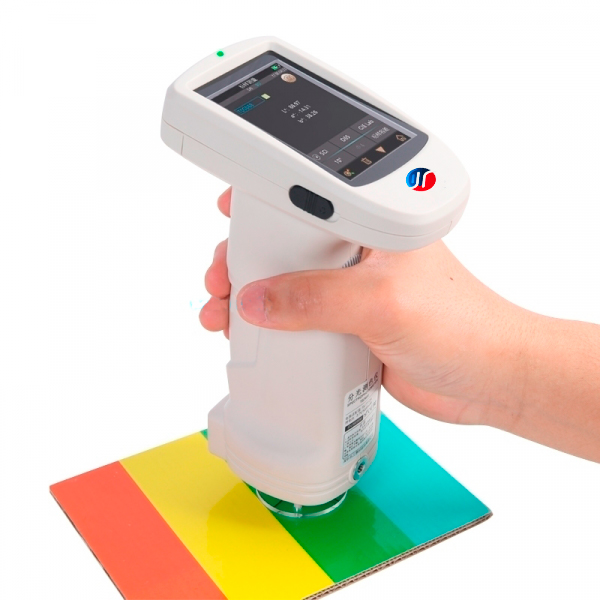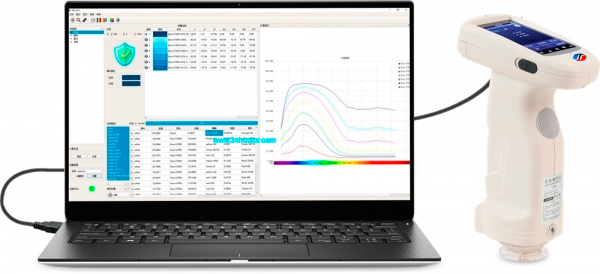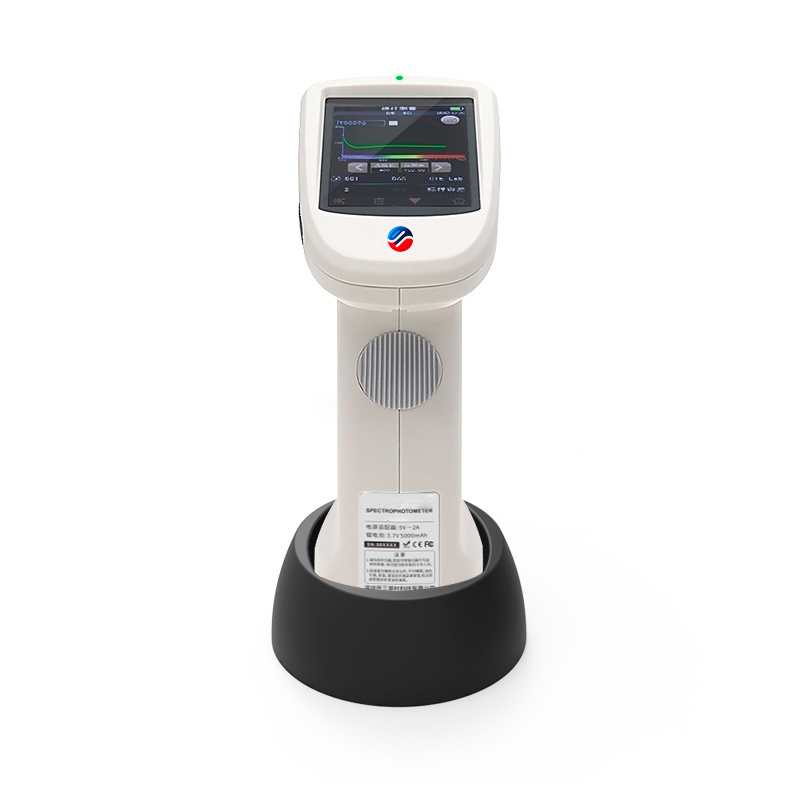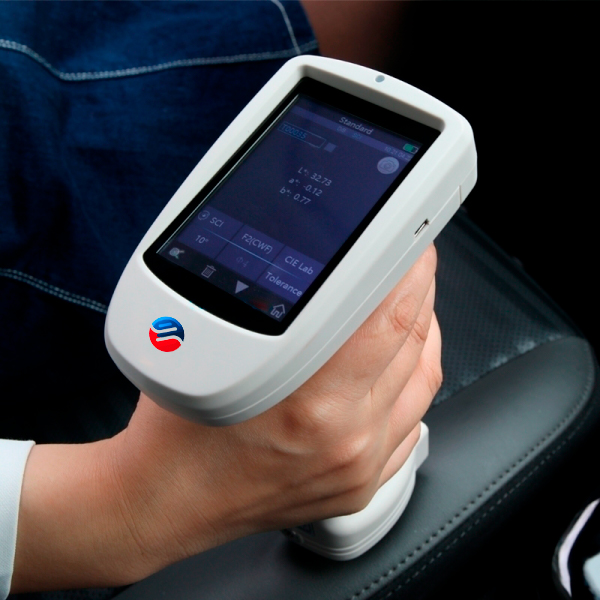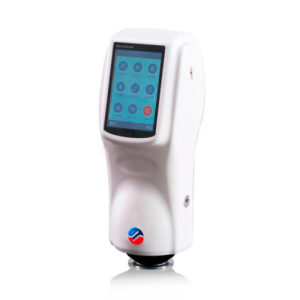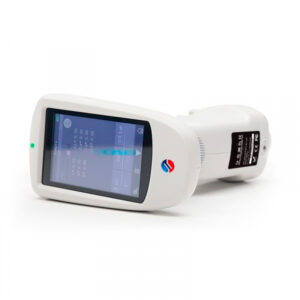Description
The Grating Spectrophotometer YG0920 is a state-of-the-art color measurement tool renowned for its precision and flexibility across various sectors. This instrument embodies cutting-edge grating spectroscopic technology, ideal for industries requiring meticulous color matching and quality assurance, such as plastics, automotive, cosmetics, and scientific research. Equipped with a high-performance silicon photodiode array sensor and a full-spectrum LED light source, the YG0920 ensures accurate measurements even in challenging conditions, establishing itself as an indispensable asset in labs and manufacturing units.
Market Price
The Grating Spectrophotometer YG0920 is positioned as a top-tier solution for precise color measurement, with a typical market price ranging from $7,076 to $7,100 USD, contingent on configuration and optional accessories. This investment reflects the high precision, advanced technology, and durability that the YG0920 brings. For businesses that demand unwavering color accuracy, this spectrophotometer offers a reliable, long-term solution, ensuring precise results in quality control and color matching applications.
Frequently Asked Questions
-
What industries can benefit from the YG0920?
The YG0920 is perfect for industries needing precise color measurement and control, including plastics, paint, textiles, automotive, medical, cosmetics, and food sectors. It’s also extensively used in scientific research and laboratories for color analysis and quality assurance. -
How does the YG0920 ensure accurate color measurements?
The YG0920 utilizes advanced grating spectroscopic technology, offering high resolution and precise color measurement. It features a silicon photodiode array sensor that enhances light sensitivity and measurement stability. Its dual optical path system enables simultaneous SCI and SCE data measurements, minimizing surface texture impacts on results. -
What light sources are available with the YG0920?
The YG0920 is equipped with a full-spectrum LED light source for consistent and accurate results and includes several additional light sources such as D65, A, C, and D50 to accommodate diverse testing requirements.
Advantages and Disadvantages
Advantages:
- High-Precision Color Measurement: The grating spectroscopic technology provides higher resolution, ensuring superior accuracy in color readings.
- Versatile Measurement Options: With various measuring apertures, the YG0920 is adaptable for a wide range of sample sizes and types.
- Reliable Repeatability: The device’s consistency is guaranteed with an easily controllable repeatability delta E*AB of 0.03, ensuring data accuracy across different devices.
- Multiple Light Sources and Color Spaces: Offers a variety of light sources and color spaces (CIE LAB, XYZ, LCh, etc.), making it ideal for different measurement conditions.
Disadvantages:
- Premium Price Point: As a high-end instrument, the YG0920 may represent a significant investment for smaller businesses or industries with lesser color measurement needs.
- Complex Calibration: Regular calibration is required to maintain optimal accuracy, which can incur additional costs and time.
Field Applications
The Grating Spectrophotometer YG0920 is pivotal in sectors where color quality control is essential. In the automotive industry, it ensures paint and coatings meet strict color specifications, avoiding costly errors. Within cosmetics, it maintains consistency in makeup products, and in the medical field, it ensures precise color matching for medical devices. The YG0920 is also vital in sectors like plastic electronics, textile printing, and food packaging, where even minor color deviations can affect quality and brand consistency.
Recommendations
To optimize the performance of the YG0920 Grating Spectrophotometer, regular calibration is crucial. Using the integrated camera positioning system will ensure accurate sample placement, particularly for intricate or small samples. For high-volume testing, employing the SQCX quality management software can efficiently manage color data and monitor quality. Additionally, utilizing the full-spectrum LED light source and UV light options ensures comprehensive and accurate measurements across all sample types.
Features
- High precision with grating spectroscopic technology.
- Selectable measuring apertures: φ8mm, φ4mm, 1x3mm.
- Full-spectrum LED light source for stable spectral distribution.
- Dual optical path system for simultaneous SCI and SCE data measurement.
- Silicon photodiode array sensor for superior light sensitivity.
Technical Specifications
| Model | YG0920 |
|
Optical Geometry
|
Reflect: di:8°, de:8°(diffused illumination, 8-degree viewing angle)
|
|
SCI (specular component included)/SCE (specular component excluded) ;
Include UV / excluded UV light source |
|
|
Conforms to CIE No.15,GB/T 3978,GB 2893,GB/T 18833,ISO7724-1,ASTM E1164,DIN5033 Teil7
|
|
|
Characteristic
|
double apertures for accurate color analysis and transmission in laboratory
|
|
It is used for precise color measurement and quality control in plastic electronics,
paint and ink, textile and garment printing and dyeing, printing, ceramics and other industries, and for fluorescent sample measurement. |
|
| Integrating Sphere Size | Φ40mm |
| Light Source |
Combined full spectrum LED light source, UV light source
|
| Spectrophotometric Mode |
Flat Grating
|
| Senso |
Silicon photodiode array (double row 40 groups)
|
| Wavelength Range |
400~700nm
|
| Wavelength Interval | 10nm |
| Semiband Width | 10nm |
| Measured Reflectance Range | 0-200% |
| Measuring Aperture |
MAV:Φ8mm/Φ10mm;SAV:Φ4mm/Φ5mm
|
| Specular Component |
SCI&SCE
|
| Color Space |
CIE LAB,XYZ,Yxy,LCh,CIE LUV,s-RGB,HunterLab,βxy,DIN Lab99 Munsell
(C/2) |
| Color Difference Formula |
ΔE*ab,ΔE*uv,ΔE*94,ΔE*cmc(2:1),
ΔE*cmc(1:1),ΔE*00, DINΔE99,ΔE (Hunter)
|
|
Other Colorimetric Index
|
WI(ASTM E313,CIE/ISO,AATCC,Hunter),
|
|
YI(ASTM D1925,ASTM 313),
|
|
|
Metamerism Index MI,
|
|
|
Staining Fastness, Color Fastness, Color Strength, Opacity,
|
|
|
8° Glossiness,555 tone classification
|
|
| Observer Angle | 2°/10° |
| Illuminant |
D65,A,C,D50,D55,D75,F1,F2(CWF),F3,F4,
F5,F6,F7(DLF),F8,F9,
F10(TPL5),F11(TL84),F12(TL83/U30) |
| Displayed Data |
Spectrogram/Values, Samples Chromaticity Values, Color
Difference Values/Graph, PASS/FAIL Result, Color Offset |
| Measuring Time |
About 1.5s (Measure SCI & SCE about 3.2s)
|
|
Repeatability
|
Spectral reflectance: MAV/SCI, Standard deviation within 0.08%
(400 nm to 700 nm: within 0.18%) |
|
Chromaticity value: MAV/SCI, within ΔE*ab 0.02 ( When a
white calibration plate is measured 30 times at 5 second intervals after white calibration) |
|
| Inter-instrument Error |
MAV/SCI, Within ΔE*ab 0.15
(Average for 12 BCRA Series II color tiles) |
| Measurement Mode |
Single Measurement, Average Measurement(2-99times)
|
| Locating Method |
Camera Locating,stabilizer cross position
|
| Dimension |
L*W*H=129X76X217mm
|
| Weight |
Approx 600g
|
| Battery |
Li-ion battery, 3.7v, 5000mAh, 6000 measurements within 8 hours
|
| Illuminant Life Span |
5 years, more than 3 million times measurements
|
| Displayed Data |
3.5-inch TFT color LCD, Capacitive Touch Screen
|
| Data Port |
USB, Bluetooth 4.2
|
| Data Storage |
Standard 1000 Pcs, Sample 30000 Pcs
|
| Language |
Simplified Chinese, English, traditional Chinese
|
| Operating Environment |
0~40℃, 0~85%RH (no condensing), Altitude < 2000m
|
| Storage Environment |
-20~50℃, 0~85%RH (no condensing)
|
| Standard Accessory |
Power Adapter, User Guide, PC Software(Download from office website), USB cable, White and Black
Calibration Cavity, Protective Cover, Wrist strap, 8mm flat aperture, 8mm tip aperture, 4mm flat aperture, 4mm tip aperture |
| Optional Accessory |
Micro Printer, Powder Test Box
|
| Notes |
The specifications are subject to change without notice.
|



